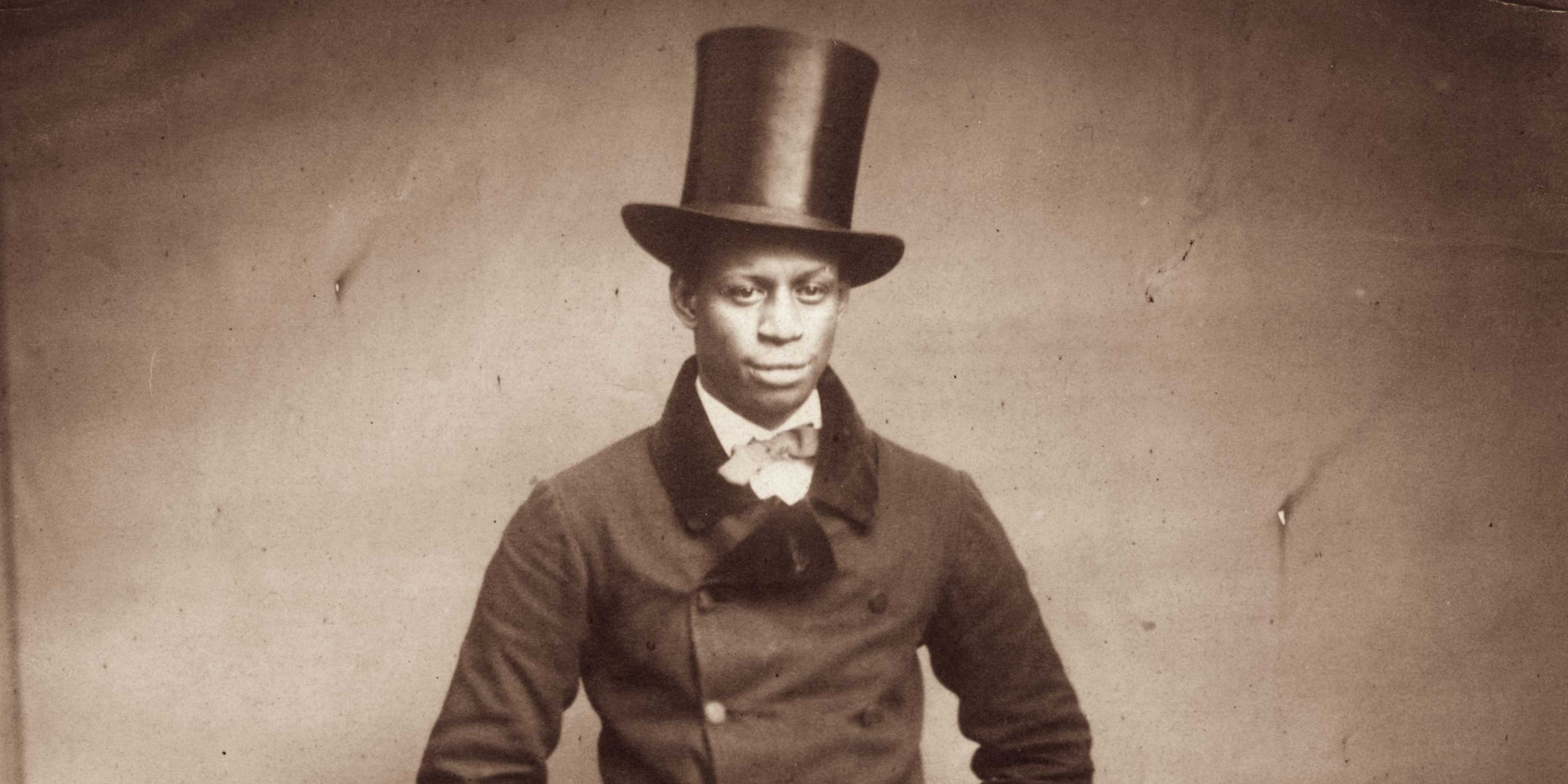Styled for Freedom
Free African Americans, while not in bondage, still struggled in the white-dominated society to gain respect. In colonial America, free Black tradesmen in the North held keen appreciation for the status and respectability that stylish attire gave them. In 1789, one of the first memoirs by a Black man was published, entitled: The Interesting Narrative of the Life of Olaudah Equiano or Gustavus Vassa, the African, written by Himself. The autobiography recounted Equiano’s capture in what is now Nigeria, at age 8, his sale to a British naval captain in the Caribbean and his journey into becoming a literate sailor, versed in trade and commerce. At 44 years old, after Equiano had saved enough to buy his freedom, he set aside 8 pounds to purchase “a suit of superfine clothes to dance with at my freedom.” On the inside cover of his memoir, Equiano is pictured as a distinguished gentleman in a ruffled lace shirt and high-collared jacket.
Elegant clothes provided social and sometimes literal currency for those seeking to escape to freedom. Some enslaved Black men stole their enslaver’s fine linen shirts and prized cut-away jackets with pewter buttons to trade for food as they traveled the Underground Railroad to freedom in the North. Other intrepid fugitives used fashionable clothes to evade capture by passing as free Black men and blending into local society.
After the Civil War, Black Americans savored their newfound emancipation, marching in cities like Charleston and Richmond in Emancipation Day parades, where smartly dressed Black men in suits and ties with vests and bowler hats and women carrying parasols walked tall, cheering in the streets.
Dressing for the Public Gaze
Industrialization fostered a new era of riches, culture and sophistication—and conferred some measure of status on well-dressed Black men in the public eye.
Haitian-born (and biracial) Alexandre Dumas, celebrated author of The Three Musketeers, was famous for being a French dandy in the early 19th century. He inherited his wardrobe, including leather pantaloons and other stylish military garb, from his father who had been the first Black general in the French army in 1793. Tall and long-legged, the swaggering teenage Dumas wrote at age 16, “I felt myself seized by the desire to look smart.”
Two of the most famous Black intellectuals of the 19th century were the iconic abolitionist orator and publisher, Frederick Douglass, and the erudite Black activist and author W.E.B. Du Bois. While not "dandies" per se, both wore dignified, tailored wardrobes that telegraphed flair, confidence and freedom. Their images powerfully countered widespread media caricatures common during the Reconstruction era showing Black people as childlike or brutish, images used to justify segregation and racial violence.
The commanding Douglass, who escaped from slavery and rose to international fame, became the most photographed man of the 19th century, sitting for more than 160 portraits. Acutely conscious that he was representing his race at a time when the nation was grappling with whether to free enslaved Black Americans and grant them the rights of citizenship, Douglass dressed for influence, favoring rakish, side-parted hair and smartly tailored three-piece suits.
The first Black man to earn a Harvard University doctorate in 1895, Du Bois was the dandier of the two, flaunting flourishes like gloves, walking sticks and top hats. His assertive self-styling, on display on his international travels in London, Paris and Berlin, “intended to convey dignity and aesthetic refinement”—an expectation that “the wearer would be treated as he was dressed, gaining acceptance that would transcend race and advance the cause of racial uplift,” wrote Denise Murrell, curator at large at the Metropolitan Museum of Art, in Superfine: Tailoring Black Style.”














